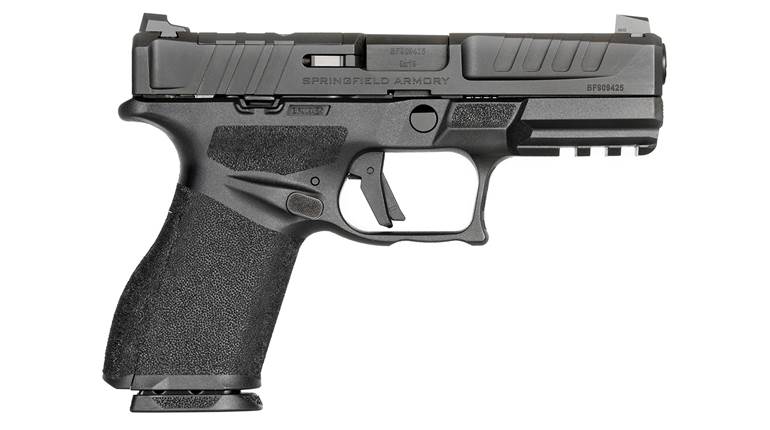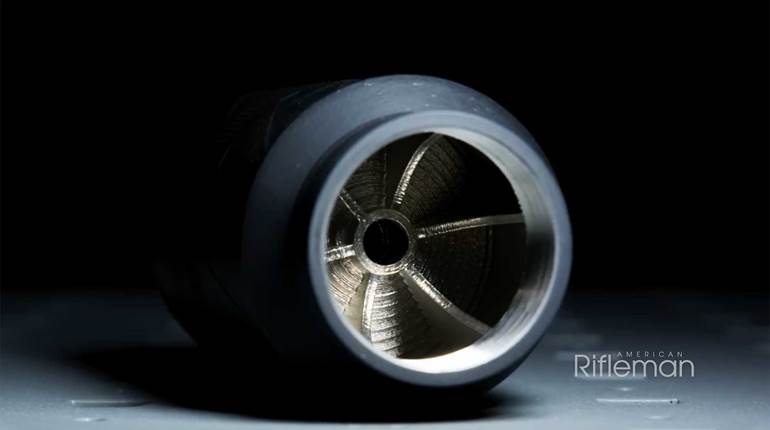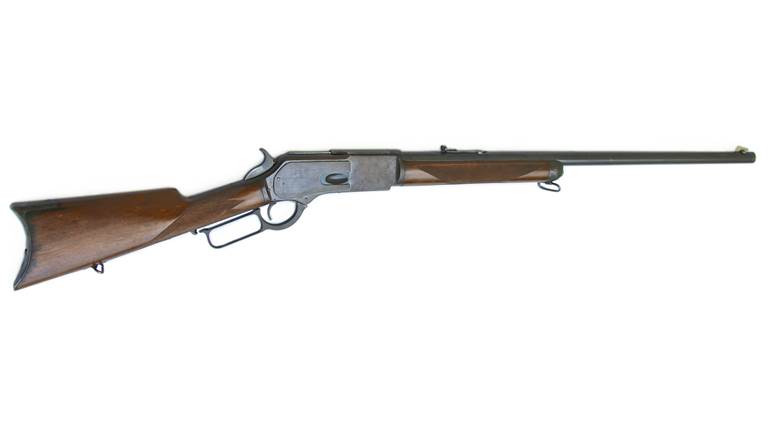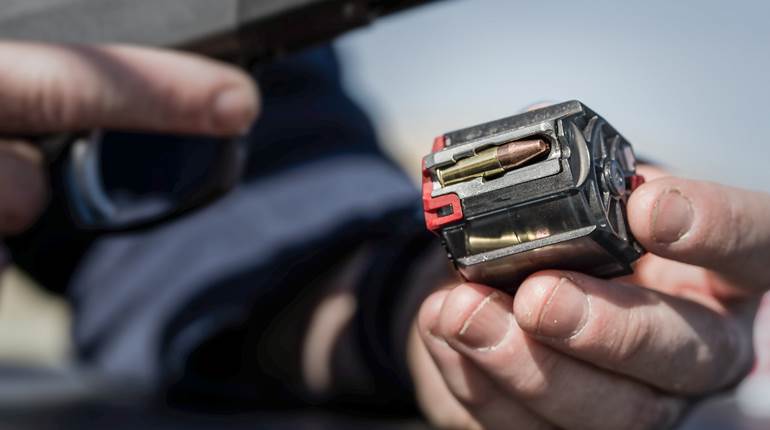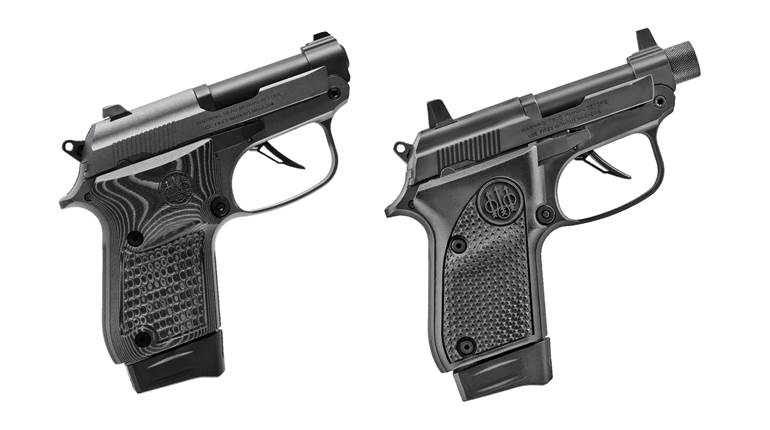
For Springfield Armory, the basic XD pistol platform has been a runaway bestseller. It started rather modestly with a rugged 9 mm Luger service pistol in one size and one finish: black. Those first models were uncomplicated guns with desirable features and a strong capability for modification and upgrade. Now made in several chamberings beyond the original 9 mm offering, the XD has blossomed into a family of modern defensive combat pistols for police, military and civilian markets. The latest strain, the Mod.2 Grip Zone, is the subject of this article, and the three introductory models are on my desk as this is written. In contrast with the recent practice of gunmakers introducing a new line with a  service-grade 9 mm, Springfield began with sub-compact models in the three most popular handgun calibers—9 mm Luger, .40 S&W and .45 ACP. This is likely in response to today’s fiercely competitive concealed carry handgun market.
service-grade 9 mm, Springfield began with sub-compact models in the three most popular handgun calibers—9 mm Luger, .40 S&W and .45 ACP. This is likely in response to today’s fiercely competitive concealed carry handgun market.
The Mod.2s are all recoil-operated, polymer-receiver, steel-slide semi-automatics, with a unique “USA” trigger action and plain service sights. All three of the pistols are short (6.25" to 6.50") guns with short, but wide, butt sections housing double-column magazines. It’s notable that the maker ships each with a second magazine, intended for a full-size pistol of the same caliber and extending below the bottom of the butt. The second magazine comes with a collar  at the bottom that is shaped to give the Mod.2 Sub-Compact a full butt section for a more generous grip and higher capacity. For example, by changing magazines, a shooter can go from a nine-round to a 13-round .45 ACP. That does not include the round already in the chamber. Obviously, it’s much easier to carry the shorter gun of the lower capacity, but a quick tactical magazine change gives you four more rounds when trouble calls. Better yet, it gives you a longer grip for improved handling.
at the bottom that is shaped to give the Mod.2 Sub-Compact a full butt section for a more generous grip and higher capacity. For example, by changing magazines, a shooter can go from a nine-round to a 13-round .45 ACP. That does not include the round already in the chamber. Obviously, it’s much easier to carry the shorter gun of the lower capacity, but a quick tactical magazine change gives you four more rounds when trouble calls. Better yet, it gives you a longer grip for improved handling.

The existing XD lines include sensible but minimal controls on all pistols, and that continues with the Mod.2. There is no manual thumb safety, however a grip safety must be compressed with a positive shooter’s grasp to fire the gun. Also, an articulated trigger safety on the face of the trigger must be depressed in order for the trigger itself to move rearward. It is very simple and works quite well, as does the internal drop safety. The other controls of note include the slide lock, just above the trigger guard on the left side of the frame and twin (ambidextrous) magazine release buttons just aft of the trigger guard. Push in from either side, and the magazine will drop from its well. 
Springfield believes in solving a number of shooter concerns right at the time of sale. Accordingly, all XDs ship in a briefcase-style black polymer container with custom-cut foam lining. The case contains the gun, two magazines, a “V”-shaped double magazine pouch, a belt-slide holster, a magazine loader, a bore brush and a cable lock. With just a couple more magazines, a shooter could take one of the pistols and its included accessories straight to the range to shoot a basic IDPA or IPSC match.
In addition, an included catalog illustrates a wide range of Springfield products—including holster and gun bag options. It’s the good range of supplied accessories that makes an XD Mod.2 an excellent buy. And while most of what I have already mentioned is true of all existing XD pistols, here I am concerned solely with the new Mod.2 Sub-Compacts.
That means looking at the concept of Grip Zone. For decades, the use of separate stocks on a handgun was almost universal. Panels of hardwood or plastic on both sides of the pistol or revolver served as the handling surfaces of the gun. A small industry grew up around the design and efficient production of such stocks. But with the advent of molded polymer pistol receivers they became largely obsolete, as the surfaces of the grip area were integral to the frame, or receiver, of the gun. The handgun industry still makes many handguns with traditional stocks every year, but the figurative handwriting is on the wall. Springfield’s XD line has always had some form of roughened or checkered gripping surface, and it worked well. On the Mod.2 series, the company is taking the idea of an optimized grip surface a big step further.
The Mod.2 receivers have strategically located nonremovable panels of texturing. In handcrafted wood or metal work, a similar treatment called stippling got its name from the use of a pointed punch tapped repeatedly across the surface to be roughened. Eventually, it came to be applied by a powered impact tool, creating an irregular surface of numerous tiny depressions and corresponding projections that adhere to the shooter’s skin when he or she grasps the gun. The roughness can be adjusted by the tool used and the depth of each strike. In a polymer receiver, the surface is created when the frame is molded. On the Mod.2 pistol, there are several panels of stippling on the backstrap, with matching panels on the frontstrap. The front ones are roughly 1/2"-square, and there are six of them in three columns of two. To the rear of the Mod.2 butt, there is a series of somewhat larger, squarish panels in generally the same configuration. The sides of the butt are very lightly textured.
Springfield refers to the entire system as the “Grip Zone.” There are three zones on the Mod.2. Zone 1 includes the two center panels of both the front- and backstrap, and the stippling is rather mild. The outer columns, totalling eight panels front and back, constitute Zone 2, where the stippling is more aggressive. Zone 3 has the lightest texturing, and consists of the sides of the frame and the area just to the rear of the trigger guard. After handling and firing the pistols in all three chamberings, I can attest to the fact that the design is not only ergonomically good, but that the varied zones of tactile adhesion work very well. Even when shooting hot loads in the .45, the gun stays anchored in the hand. 
Springfield did not stop at the receiver when it came to Mod.2 upgrades. In any configuration, the XD pistol is hardly the sleek Italian sports car of service pistols—it’s square and blocky. In an effort to lessen this impression and speak to the gun’s modern audience, Springfield’s engineers went over the slide carefully, slimming it down and lightening it. In doing so, they enhanced the gun’s appearance and its utility.
See video of Rob Leatham shooting the Springfield XD Mod.2
XD slides have flat sides, stepped in such a way that the lower portion—which contacts and runs on the receiver—is significantly thicker than the upper portion. Earlier XDs had this two-step contour running from front to back. It looked good and got the job done. The change with the Mod.2 makes a big difference. The thicker portion of the slide now extends upward to the top edge, but only at the rear of the slide and adjacent to the angled cocking serrations. Springfield calls the treatment Posi-Wedge serrations. A thinner portion runs from the cocking serrations forward toward the muzzle, stopping about 1/2" short of it. The reprofiling of the slide comes out looking rather modernistic, but it has one desirable byproduct. Looking at the lower rear corner of the cocking serrations, the design encourages grasping the slide in an overhand grip, with thumb and forefinger on opposite sides. There is a small pocket here, into which the fingers easily fit. It is a natural pocket, thicker on the back, and forming a handy ledge that makes racking the slide a little easier. It’s unlikely that the fingers are going to slip off the gun. The line between thick and thin begins just below the rear sight, runs down across the back edge of the cocking serrations, angles toward the muzzle, steps up at the front of the cocking serrations and runs straight to the front end of the slide where it turns down just short of the muzzle. At this point, the line transitions to the frame.
All things considered, these new Mod.2 pistols are very shootable. I began my shooting sessions with the three guns by trying them with a variety of loads. Small quantities of cartridges left over from other shoots routinely go into a coffee can for just such range trips as these. Shooting mixed loads verifies the gun’s cartridge adaptability and mechanical reliability. I also like to fire a test pistol by shooting it with a limp wrist, held sideways and even inverted. Nothing I tried could induce a malfunction. The Mod.2s were entirely reliable. 
The trigger system on the XDs is built for safety and speed. When the slide cycles, the in-line striker appears to be fully set. Grasping the pistol activates the grip safety on the backstrap, and placing a finger on the trigger clears the trigger safety. There is a rather long takeup on the trigger and, beyond the sear engagement, the trigger pull has a distinct creep to it. This is not a match-grade competitive pistol, so the trigger pull is made to be safe until the combat handgunner piles on the pressure. It is also a trigger that can be worked very rapidly. The reset point is well forward, but is clean and crisp. The trend in modern pistols is for some form of simplified trigger system that is the same for every shot and requires no active safeties. The XD Ultra Safety Assurance is one of the better ones.
I encountered only one problem in test-firing the trio of pistols. I chose to use the long magazines, not for their capacity but rather for their increased grip area, which also includes Grip Zones front and rear. Be careful when you are inserting an extended magazine into the short butt. Particularly under the pressure of time, you can trap your finger, typically the little one, between the top edge of the collar and the bottom edge of the short magazine well. It stings like the devil, and I have the blood blister to show for it. Accuracy results are tabulated here and show a pistol system that is respectably accurate.

As this is written, the Mod.2 line consists only of subcompacts, but I believe it will expand. For example, I would like to see a full-size .45 ACP with a 5" barrel and slide. That notwithstanding, it appears that the gun company from middle America that has already made the XD pistol a household brand may be well on its way to adding yet another valuable branch to its well-respected family tree.
















